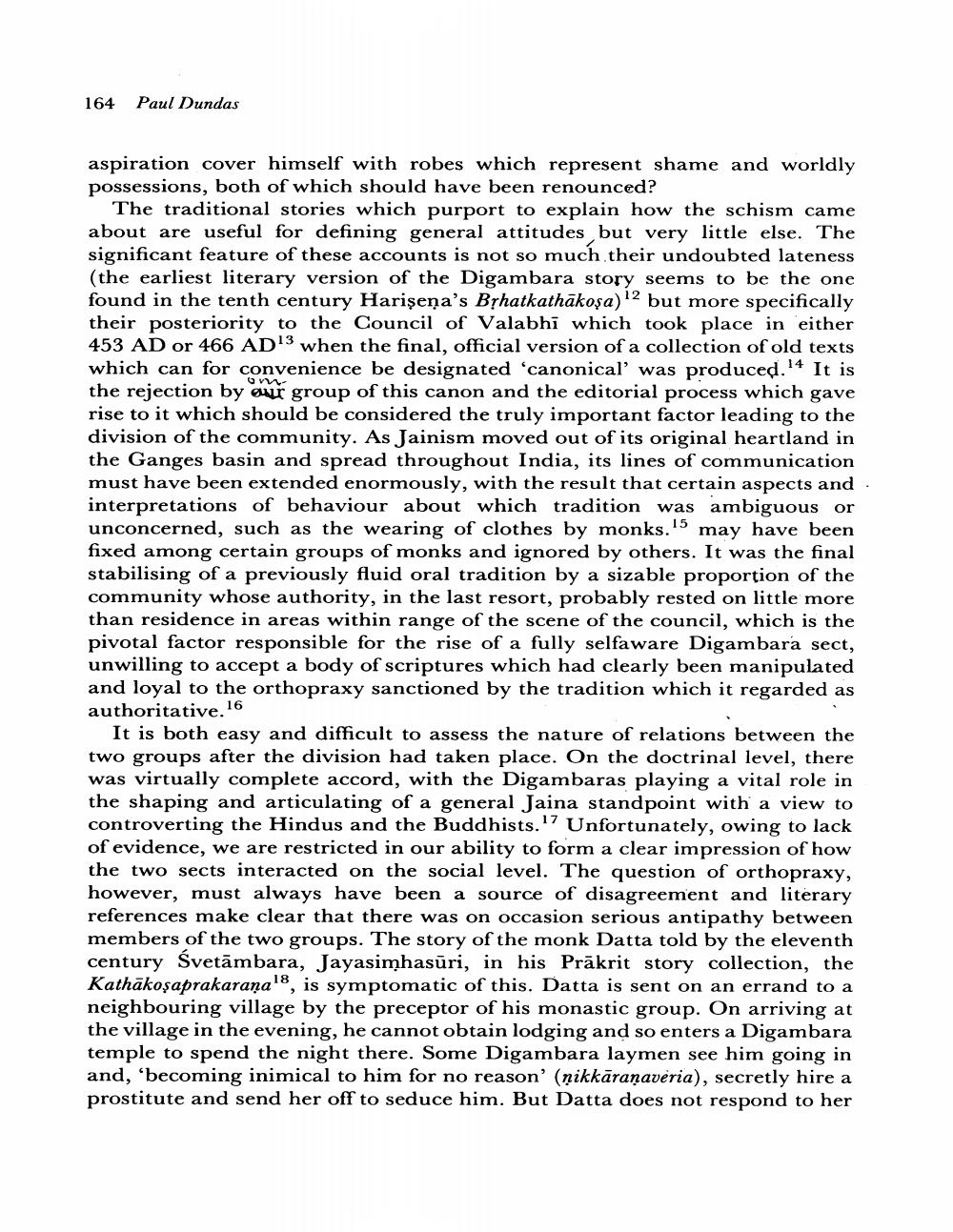Book Title: Food And Freedom Author(s): Paul Dundas Publisher: Paul Dundas View full book textPage 4
________________ 164 Paul Dundas aspiration cover himself with robes which represent shame and worldly possessions, both of which should have been renounced? The traditional stories which purport to explain how the schism came about are useful for defining general attitudes but very little else. The significant feature of these accounts is not so much their undoubted lateness (the earliest literary version of the Digambara story seems to be the one found in the tenth century Harişena's Bịhatkathākoşa)'2 but more specifically their posteriority to the Council of Valabhi which took place in either 453 AD or 466 AD13 when the final, official version of a collection of old texts which can for convenience be designated 'canonical was produced. 14 It is the rejection by our group of this canon and the editorial process which gave rise to it which should be considered the truly important factor leading to the division of the community. As Jainism moved out of its original heartland in the Ganges basin and spread throughout India, its lines of communication must have been extended enormously, with the result that certain aspects and interpretations of behaviour about which tradition was ambiguous or unconcerned, such as the wearing of clothes by monks. 15 may have been fixed among certain groups of monks and ignored by others. It was the final stabilising of a previously fluid oral tradition by a sizable proportion of the community whose authority, in the last resort, probably rested on little more than residence in areas within range of the scene of the council, which is the pivotal factor responsible for the rise of a fully selfaware Digambara sect, unwilling to accept a body of scriptures which had clearly been manipulated and loyal to the orthopraxy sanctioned by the tradition which it regarded as authoritative. 16 It is both easy and difficult to assess the nature of relations between the two groups after the division had taken place. On the doctrinal level, there was virtually complete accord, with the Digambaras playing a vital role in the shaping and articulating of a general Jaina standpoint with a view to controverting the Hindus and the Buddhists."7 Unfortunately, owing to lack of evidence, we are restricted in our ability to form a clear impression of how the two sects interacted on the social level. The question of orthopraxy, however, must always have been a source of disagreement and literary references make clear that there was on occasion serious antipathy between members of the two groups. The story of the monk Datta told by the eleventh century Svetāmbara, Jayasimhasūri, in his Prākrit story collection, the Kathākoşaprakaraṇa18, is symptomatic of this. Datta is sent on an errand to a neighbouring village by the preceptor of his monastic group. On arriving at the village in the evening, he cannot obtain lodging and so enters a Digambara temple to spend the night there. Some Digambara laymen see him going in and, 'becoming inimical to him for no reason' (ņikkāraṇaveria), secretly hire a prostitute and send her off to seduce him. But Datta does not respond to herPage Navigation
1 2 3 4 5 6 7 8 9 10 11 12 13 14 15 16 17 18 19 20 21 22 23 24 25 26 27 28 29 30 31 32 33 34 35 36 37
